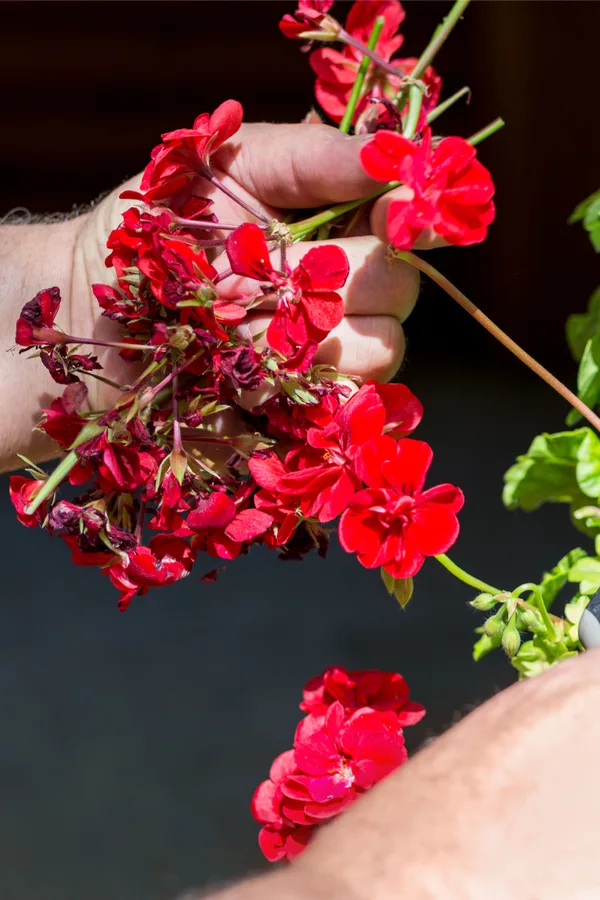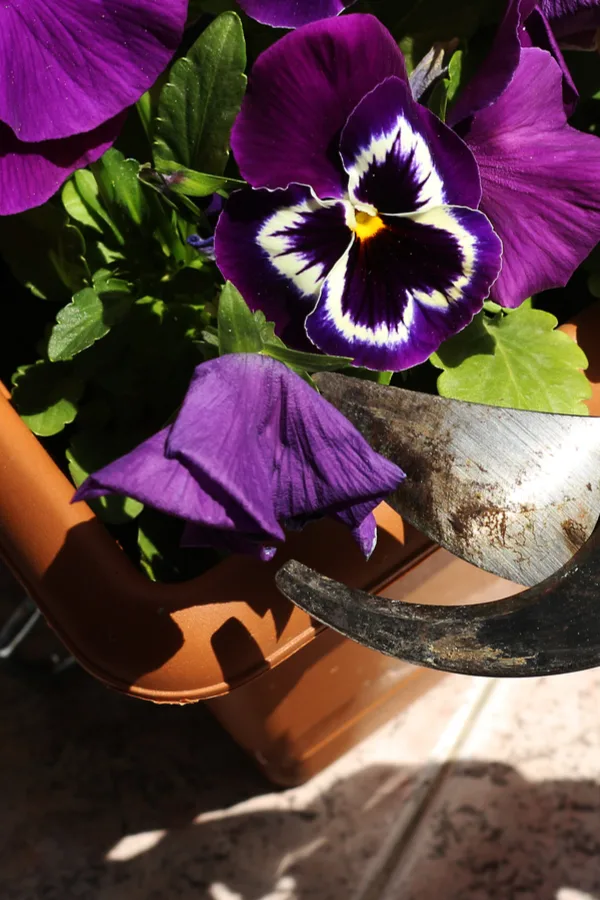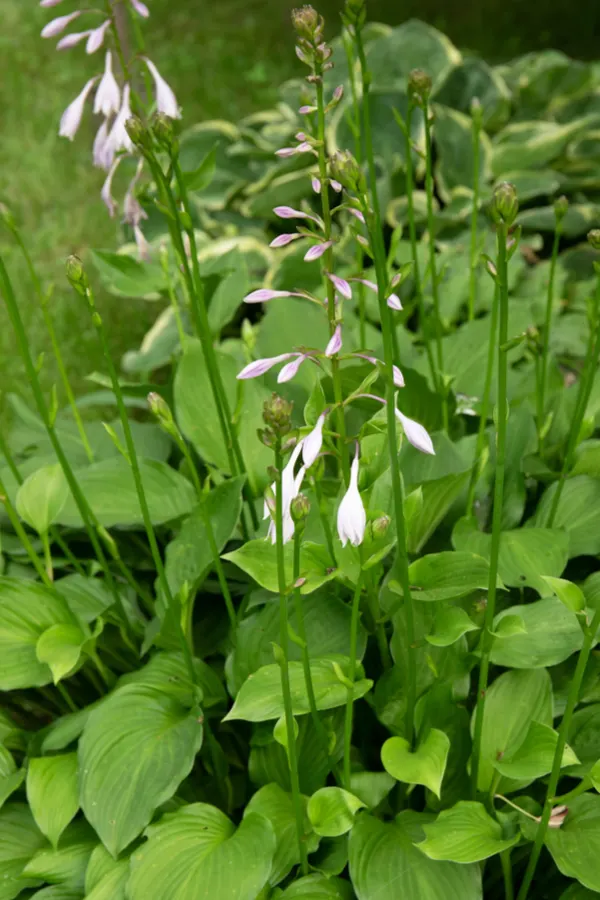There is no better way to get more consistent blooms on your annual and perennial flowers than to learn and practice the art of deadheading plants!
Whether it’s roses, geraniums, daylilies or marigolds, deadheading on a regular basis can help keep your plants producing more blooms and more flowers.
So what exactly is deadheading? And why is it so important when it comes to keeping plants blooming? In a nutshell, deadheading is the practice of removing spent or fading flowers from a plant. And believe it or not, not only can it help with more blooms, it can also help to keep your plants healthier too.

The Importance of Removing Old Blooms – How To Deadhead Flowers
It takes an incredible amount of energy to produce a flower on a plant. As a bud forms into a bloom and then finally into a flower, it draws resources from the plant at each stage to do so.
But when the bloom finally unfurls into a glorious flower, the energy consumption from the plant does not stop. In fact, it continues on and on. All in order to attempt to keep the flower head vibrant and blooming strong.
Once a bloom begins to fail and fade, you might think a plant would stop wasting energy trying to revive the flower. But unfortunately, that isn’t the case.
Instead, the plant continues to feed the flower, trying to fix and heal it with more energy. Even once the bloom completely dies off!

This is exactly where deadheading plays an important part in keeping plants blooming and healthy. All of that wasted energy being sent to decaying and deceased blooms can deplete a plant of its energy. Energy that could be going to producing more foliage, more buds, and more flowers.
Here is the good news, once a spent flower is removed from a plant, the energy loss stops. And instead of trying to fix a failing bloom, the plant redirects its energy toward creating new blooms.
Deadheading can be a productive practice for both annuals and perennials, and for more than just one reason. Here is a look at how to deadhead each, along with a few specifics on the best ways to deadhead your plants.
How To Deadhead Annual Flowers
Annual flowers stand the most to gain from consistent deadheading. Whether planted in flowerbeds, containers or hanging baskets, annuals are meant to be in bloom all season long.
But in order to help keep those blooms coming on, deadheading is a must. And not only will it help spur on new blooms, it also helps keep your plants looking great. After all, who wants to look at a big flowering container with a bunch of dying blooms on it!

Petunias, impatiens, pansies, geraniums all benefit hugely from deadheading. As do trumpet flower, marigolds, cosmos and zinnias. In fact, nearly all annuals will benefit in some fashion from deadheading. (See: How To Keep Impatiens Blooming Strong All Summer Long)
The key to deadheading annuals successfully is consistency. By simply removing old blooms a few times each week, the plant will concentrate on creating new buds efficiently.
The Ease of Deadheading Annuals
The best part of all, deadheading an annual is an easy task to do! Most annual flowers are quite delicate and extend from thin stems. This makes it easy to simply pull off old blooms with little effort. Impatiens, petunias, trumpet flowers and pansies all fall into this category.
For annuals that produce their flowers on longer or tougher stems, pinching is a great alternative. Geraniums are a great example of this.
With blooms that extend out on longer shoots, by simply using your fingernails, you can easily pinch off the stem back to the plant.

For those that struggle a bit with pinching, a good pair of scissors or a small handheld pruner will do the trick. And don’t forget, all of those bloom stems and spent flowers make a great addition for your compost bin!
How To Deadhead Perennial Flowers
Unlike annuals, most perennials do not have the capability to bloom for the duration of the growing season. But that doesn’t mean they can’t benefit greatly from deadheading.
Perennials such as Black Eyed Susan, Coneflower, Hostas and many daylily varieties tend to bloom for a specific three to four week period. However, by deadheading the spent blooms from these plants, it will help the plant produce more blooms during that period.
Just as with annuals, perennial plants spend energy on trying to keep existing blooms going. But by pruning off dying blooms, they can instead turn the energy into creating a few more blooms.

Beyond gaining a few more blooms, deadheading perennials can help plants with their foliage. When decaying stems and flowers are removed, a perennial also has more energy to put into its foliage and roots. That, in turn, helps produce a healthier plant that will flower even more next year!
Season Long Flowering Perennials – How To Deadhead Flowers
It is important to note that there are some perennials that bloom all summer long. In addition, there are other varieties that can bloom for multiple periods throughout the spring, summer and fall.
For perennials that fall under this category, deadheading can have the same effect as with annuals. Roses are an excellent example of this. By simply cutting back spent rose blooms, the plant can focus its energy on forming new rose buds.
The same goes for ever-blooming perennial varieties such as hardy geraniums, blanket flowers and Stella D’oro daylilies. All of these perennials can stay in a state of constant bloom. And all will do so more easily when their old blooms are removed on a regular basis.
One thing is for sure, by simply practicing a little deadheading this year on your annual and perennial flowers, you can have bigger and better blooms – and more vibrant and healthier plants!
Follow Our Facebook Page For Great Gardening Tips And Advice! This Is My Garden Facebook Page
This Is My Garden is a garden website created by gardeners, for gardeners. Jim and Mary Competti have been writing gardening, DIY and recipe articles and books and speaking for over 15 years from their 46 acre Ohio farm. They publish three articles every week, 52 weeks a year. Sign up today to follow via email, or follow along!

